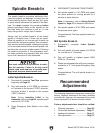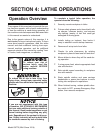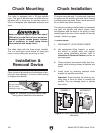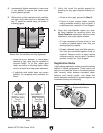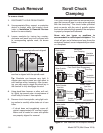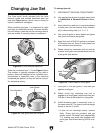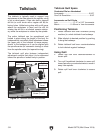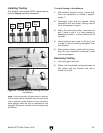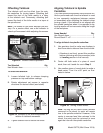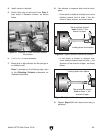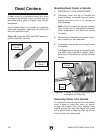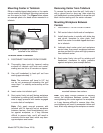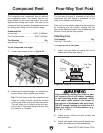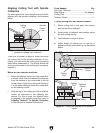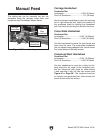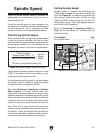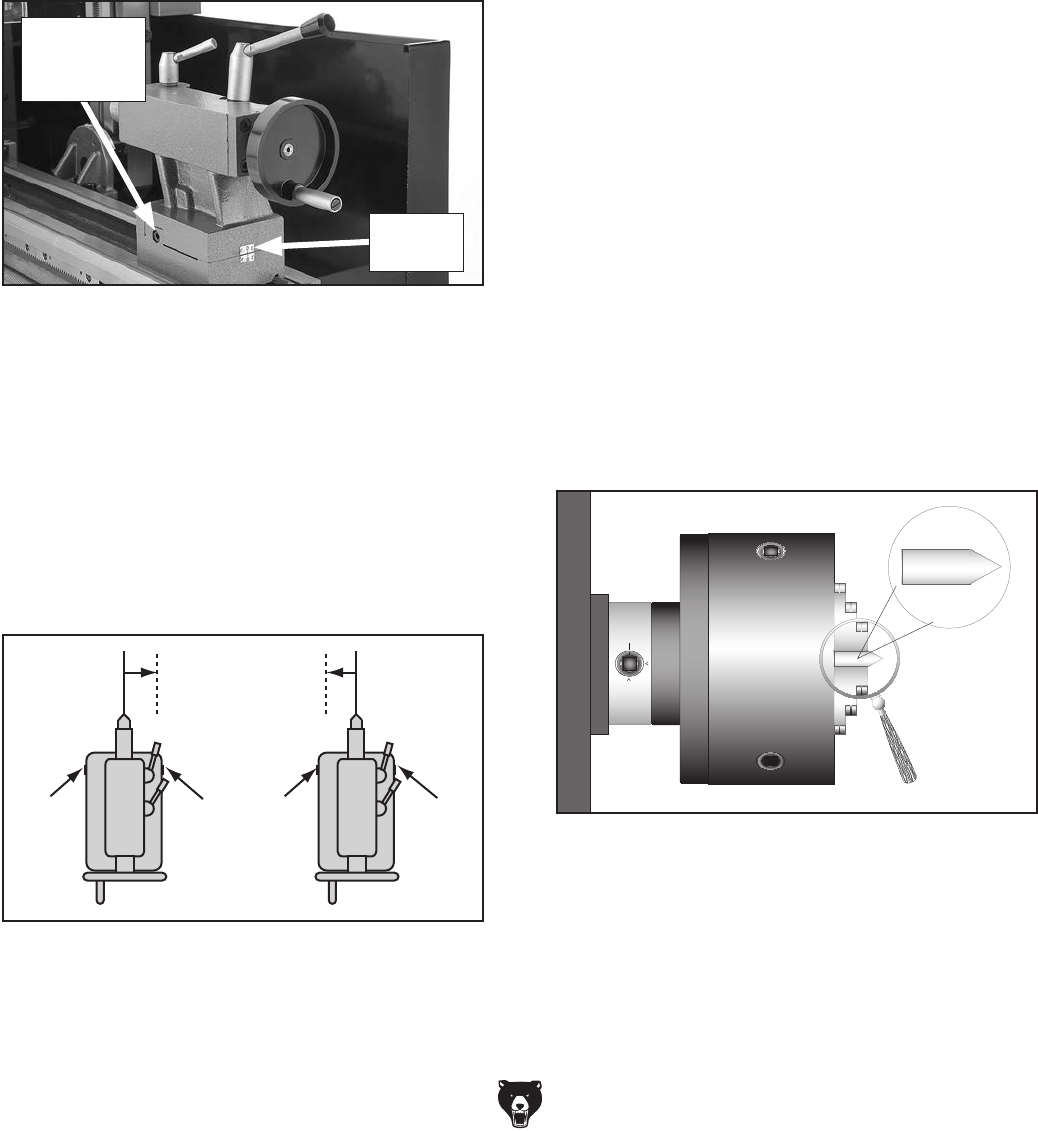
-34-
Model G0773 (Mfd. Since 12/14)
Turn
CCW
Turn
CCW
Turn
CW
Turn
CW
Figure 35. Example of set screw adjustment in
relation to tailstock movement.
Tool Needed Qty
Hex Wrench 4mm .............................................. 1
Aligning Tailstock to Spindle
Centerline
Figure 36. Turning a dead center.
This is an essential adjustment that should be ver-
ified or performed each time the tailstock is used
to turn concentric workpieces between centers
or immediately after offsetting the tailstock when
turning a taper. If the tailstock is not aligned with
the spindle centerline when it is supposed to be,
turning results will be inaccurate along the length
of the workpiece.
Items Needed Qty
Hex Wrench 4mm .............................................. 1
Round Stock 2" x 6" .......................................... 2
Offsetting Tailstock
The tailstock quill can be offset from the spin-
dle centerline for turning tapers. Offsetting quill
toward the front of the lathe results in a taper
at the tailstock end. Conversely, offsetting quill
toward the back of the lathe results in a taper at
the spindle end.
Note: The marks on the offset indicator are arbi-
trary. For a precise offset, use a dial indicator to
check quill movement while adjusting the screws.
Figure 34. Tailstock offset adjustment.
Offset
Indicator
Adjustment
Set Screws
(1 of 2)
To offset the tailstock:
1.
Loosen tailstock lock to release clamping
pressure on top and bottom castings.
2.
Rotate adjustment set screws in opposite
directions for desired offset (see below).
3. Tighten tailstock lock to secure the offset.
To align tailstock to spindle centerline:
1.
Use precision level to make sure bedway is
level from side to side and from front to back.
— If bedway is not level, correct this condition
before continuing with this procedure (refer
to Leveling section in this manual).
2.
Center drill both ends of a piece of round
stock, then set it aside for use in Step 5.
3.
Use another piece of round stock to make a
dead center. Turn it to a 60° point, as illus-
trated in below.
Note: As long as this dead center remains
unmoved in the chuck, its point will remain
true to the spindle centerline. However, if the
center is removed and later returned to the
chuck, the point must be re-turned to once
again be true with the spindle centerline.



